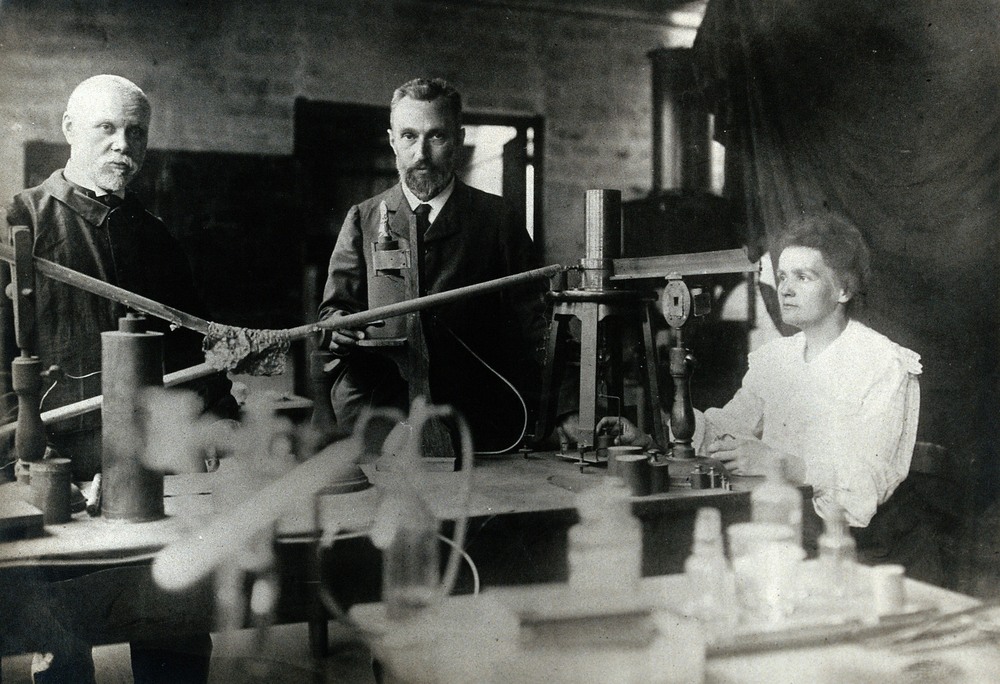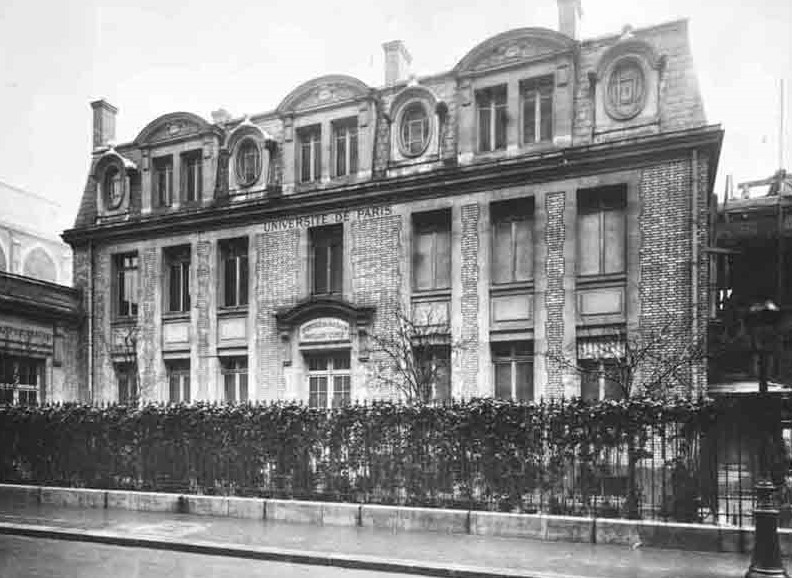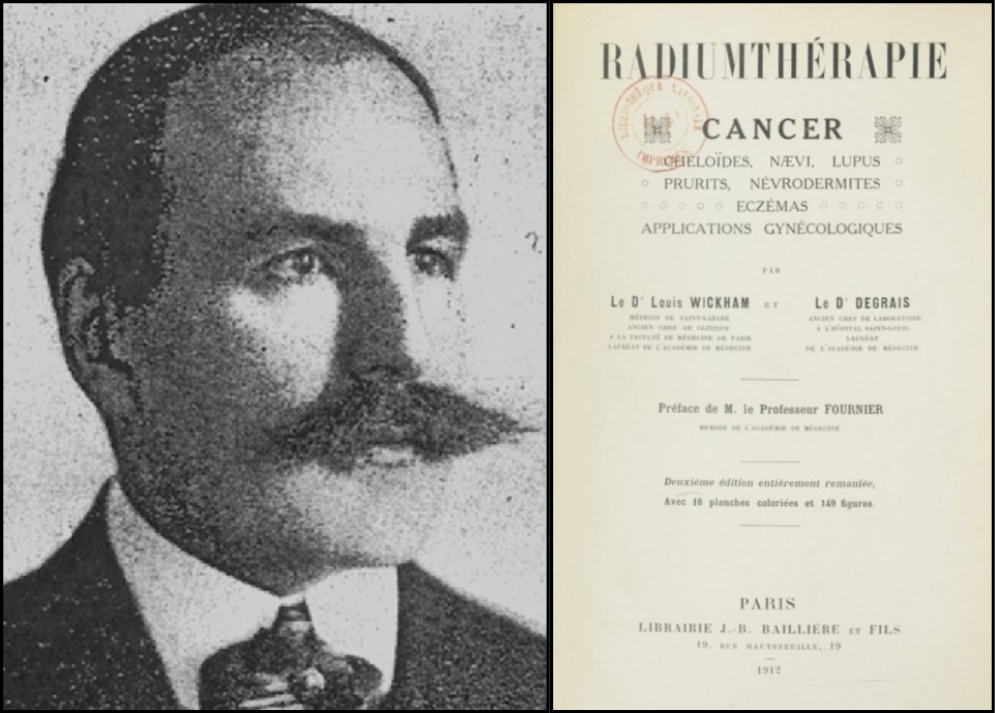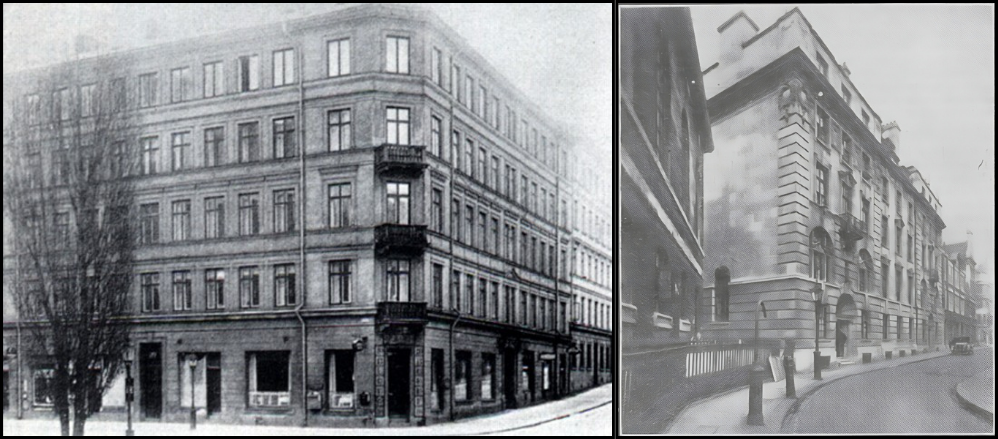A Glimmer of Hope?
In 1898, Marie and Pierre Curie announced the discovery of a new radioactive element: radium. At the time, Marie was a doctorate student at the Sorbonne University and her husband Pierre was a professor at Paris’s École de physique et chimie (school of physics and chemistry). As part of her doctorate research, Marie Curie noticed that the amount of radiation emitted by pitchblende—a radioactive ore—was much higher than the presence of uranium alone could explain. She had discovered radium.
It would take her and her husband four more years of hard work and several tons of pitchblende to isolate a pure sample of the new radioactive element. This technical prowess would turn the scientific world upside down. In 1903, the Curies and Henri Becquerel—who first discovered radioactivity—received the Nobel Prize in Physics.
But scientists were not the only ones interested in radium. The element’s ability to turn objects phosphorescent, while also slowing down the development of larvae and turning tadpoles into “monstrosities”, aroused broad public curiosity. Pharmaceutical companies and other entrepreneurs would take advantage of this new craze. Many products claiming to contain radium and boasting miraculous results—none of which were medically proven, of course—started popping up. In Maisonneuve, for example, a certain Daniel Bergevin commercialized in 1912 a product called “radium” water which he claimed had numerous medicinal properties.
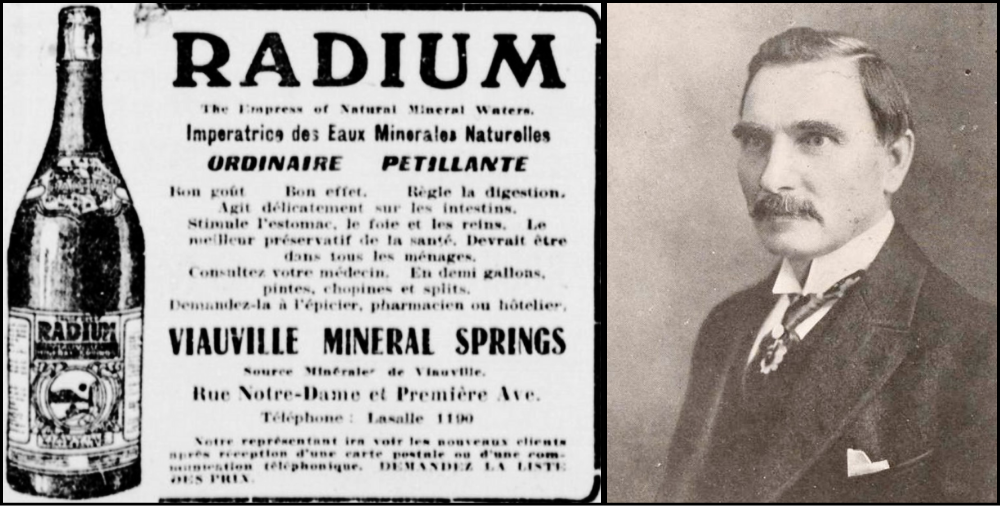
(Left) Advertisement for a “Radium” water sold by Viauville Mineral Springs, 1913 (Right) Portrait of Daniel Bergevin, 1915
In the medical field, it was radium’s effectiveness in eliminating diseased tissue without surgery that attracted curiosity. In 1906, Doctor Louis Wickham, working at Paris’ newly inaugurated Laboratoire biologique du Radium, started studying the therapeutic effects of radium. In 1910, he published the results of his experiments in a book entitled Radiumthérapie. Encouraged by this progress, new research centres started popping up all around Europe.
Following his visits to this radiobiology laboratory in 1907, 1908 and 1909, Doctor William H. B. Aikins bought a small quantity of radium and founded the Radium Institute of Toronto. This was Canada’s first private clinic that specialized in radiotherapy. Back then, radium’s true effectiveness in treating various types of cancers was not fully understood. Still, many doctors believed that this was the missing piece in the effective treatment and perhaps even eradication of the disease.


